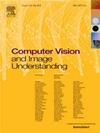Few-shot object detection via synthetic features with optimal transport
IF 4.3
3区 计算机科学
Q2 COMPUTER SCIENCE, ARTIFICIAL INTELLIGENCE
引用次数: 0
Abstract
Few-shot object detection aims to simultaneously localize and classify the objects in an image with limited training samples. Most existing few-shot object detection methods focus on extracting the features of a few samples of novel classes, which can lack diversity. Consequently, they may not sufficiently capture the data distribution. To address this limitation, we propose a novel approach that trains a generator to produce synthetic data for novel classes. Still, directly training a generator on the novel class is ineffective due to the scarcity of novel data. To overcome this issue, we leverage the large-scale dataset of base classes by training a generator that captures the data variations of the dataset. Specifically, we train the generator with an optimal transport loss that minimizes the distance between the real and synthetic data distributions, which encourages the generator to capture data variations in base classes. We then transfer the captured variations to novel classes by generating synthetic data with the trained generator. Extensive experiments on benchmark datasets demonstrate that the proposed method outperforms the state of the art.
基于最优传输的合成特征的少镜头目标检测
少拍目标检测的目的是在训练样本有限的情况下,对图像中的目标进行同时定位和分类。现有的小镜头目标检测方法大多集中于提取新类别的少数样本特征,缺乏多样性。因此,它们可能无法充分捕获数据分布。为了解决这一限制,我们提出了一种新的方法,训练生成器为新类生成合成数据。然而,由于缺乏新的数据,直接在新的类上训练生成器是无效的。为了克服这个问题,我们通过训练一个生成器来捕获数据集的数据变化,从而利用基类的大规模数据集。具体来说,我们用最优传输损失训练生成器,使真实数据分布和合成数据分布之间的距离最小化,这鼓励生成器捕获基类中的数据变化。然后,我们通过使用训练好的生成器生成合成数据,将捕获的变化转移到新的类中。在基准数据集上进行的大量实验表明,所提出的方法优于目前的方法。
本文章由计算机程序翻译,如有差异,请以英文原文为准。
求助全文
约1分钟内获得全文
求助全文
来源期刊

Computer Vision and Image Understanding
工程技术-工程:电子与电气
CiteScore
7.80
自引率
4.40%
发文量
112
审稿时长
79 days
期刊介绍:
The central focus of this journal is the computer analysis of pictorial information. Computer Vision and Image Understanding publishes papers covering all aspects of image analysis from the low-level, iconic processes of early vision to the high-level, symbolic processes of recognition and interpretation. A wide range of topics in the image understanding area is covered, including papers offering insights that differ from predominant views.
Research Areas Include:
• Theory
• Early vision
• Data structures and representations
• Shape
• Range
• Motion
• Matching and recognition
• Architecture and languages
• Vision systems
 求助内容:
求助内容: 应助结果提醒方式:
应助结果提醒方式:


